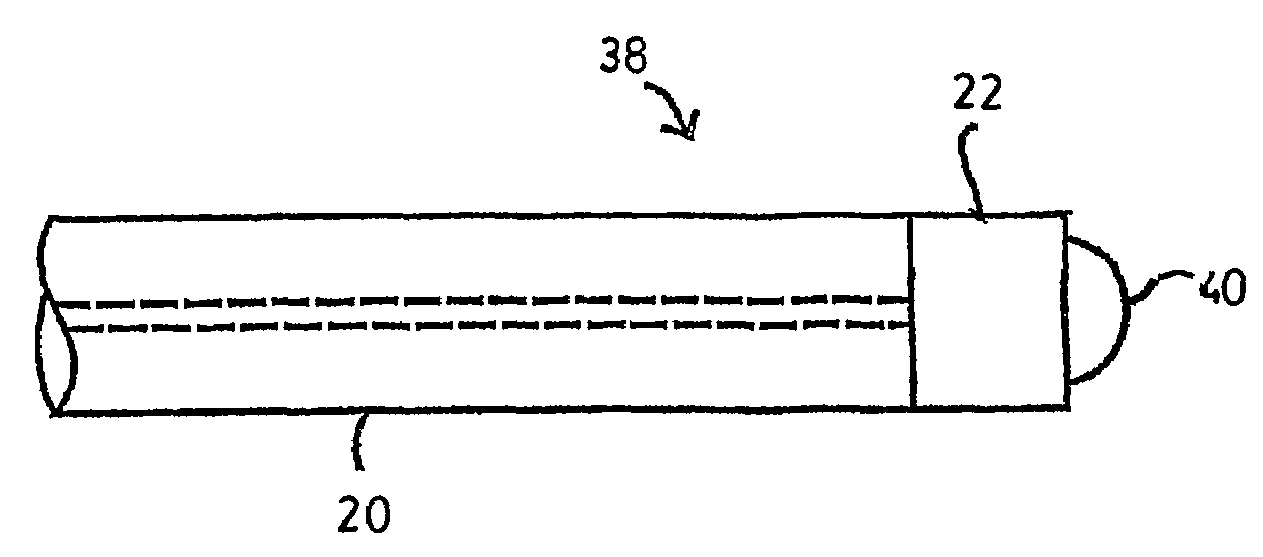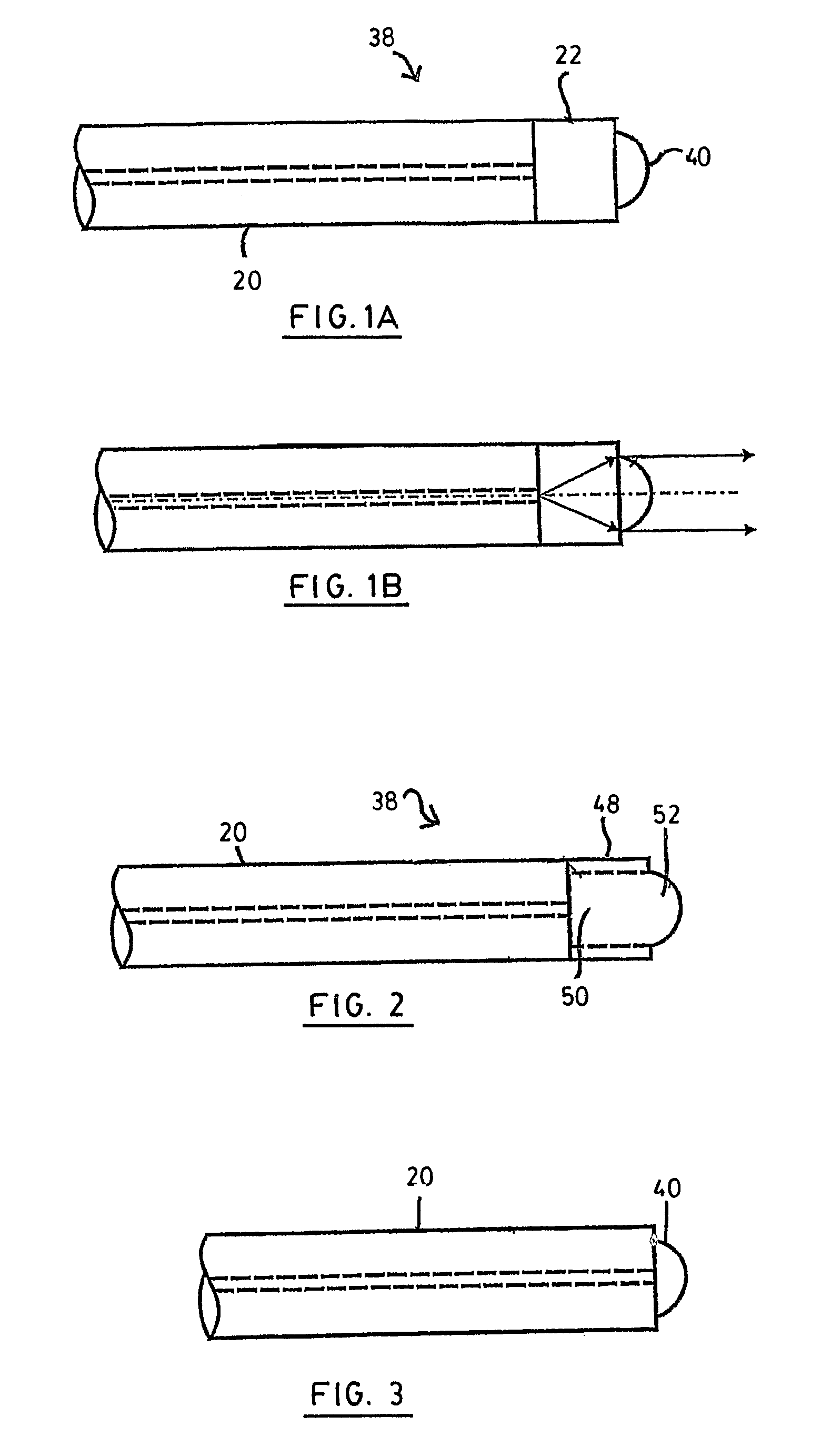Manufacturing a microlens at the extremity of a lead waveguide
a lead waveguide and microlens technology, applied in the field of optical microcomponents, can solve the problems of mechanical instability of adhesives, complex process of microlens alignment in front of optical fibers, and inability to meet the requirements of optical fibers
- Summary
- Abstract
- Description
- Claims
- Application Information
AI Technical Summary
Benefits of technology
Problems solved by technology
Method used
Image
Examples
Embodiment Construction
[0051]In the following description, similar features in the drawings have been given similar reference numerals and in order to weight down the figures, some elements are not referred to in some figures if they were already identified in a precedent.
[0052]The present invention first provides various methods for the fabrication of a microlens at an extremity of a lead waveguide. As will be apparent from the description below, the present method may be used to produce a resulting microlens of any one of a variety of desired shapes.
[0053]For convenience, throughout the present specification, the various embodiments of methods and assemblies according to the invention will be described using an optical fiber as the lead waveguide. It is however understood that the present invention may be easily adapted to planar or other types of wave guiding structures from which light may need to be coupled, and that such devices are clearly considered within the scope of the present invention.
[0054]...
PUM
| Property | Measurement | Unit |
|---|---|---|
| spacer length | aaaaa | aaaaa |
| spacer length | aaaaa | aaaaa |
| size | aaaaa | aaaaa |
Abstract
Description
Claims
Application Information
 Login to View More
Login to View More - R&D
- Intellectual Property
- Life Sciences
- Materials
- Tech Scout
- Unparalleled Data Quality
- Higher Quality Content
- 60% Fewer Hallucinations
Browse by: Latest US Patents, China's latest patents, Technical Efficacy Thesaurus, Application Domain, Technology Topic, Popular Technical Reports.
© 2025 PatSnap. All rights reserved.Legal|Privacy policy|Modern Slavery Act Transparency Statement|Sitemap|About US| Contact US: help@patsnap.com



